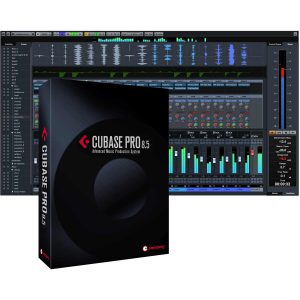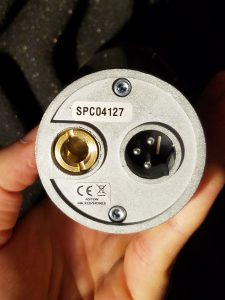So ya wanna know what’s the best recording software for PC, eh? Ok! Let’s look at the options.
But first… a grand audio adventure… !
“Back against the cold stone, Bereso’s sweat was nonetheless rolling down the back of his neck, produced by the exertion of running the three miles from the tower’s hold.
He had found and taken the proof he was looking for: the Usurpers had continued honing their new magic, and two days hence they would meet in the royal court to perform their latest Direwolf & Pony show – proof that Proto’s dynasty was at an end and no longer needed. That he… was no longer needed.

He listened. Faint metallic clinks around the corner. Deep murmurs in the dark.
The Usurper mercenaries were onto him. It was just a matter of minutes before they’d find him, seeking to steal the object of gold that hung heavy around his neck.; the seal of authority that gave the King’s preference, now more hotly contested than ever in the islands of Stoo’Dyo.
He must get to his ship!
Suddenly a bright archway of light stabbed the dark-adjusted open pupils of his eyes.
As he quickly squinted, he could see and hear his crew on the shoreline, his ship safely moored, and the smell of the ocean entering his nostrils like an old friend.
The audio magic had earned him another magic portal!
“Here! Over here!!” They’d seen the light. Without hesitation, he plunged into the unnatural doorway, leaving rock, dust, hate and death behind him as it closed just as suddenly behind him, giving the Proto dynasty one further day… to rule the waves.”
SOUND waves, that is!
The domination wars that have been raging for years continue, and the same question that’s flown by ravens to every corner of the land every year still persists:
Who has the best recording software for PC??!
If you’re wondering yourself, then come with me as we sit by a fire in the gloaming woods, safe for the moment, and let us read with caution… the carrier raven’s words…!
Sonar – Greyjoy Sails on the Horizon
I’ve been a Sonar user since… well, since it was only called Cakewalk! Now the company is called Cakewalk and the software Sonar. I didn’t mind the name upgrade tho’, since they also consistently upgraded the software year by year too.
Sonar has always been only for PC, and is the only one on our list today that is not cross-platform. There’s a rumour that it will be Mac-compoatible one day, but it hasn’t arrived yet.

It’s claim to fame thus far has been as an easy (but not simple!) recording platform used in home studios and by bands when they’re on the road and want to throw something down. George Clinton, Jimmy Buffet, Jon Anderson from Yes, Tom Hamilton from Aerosmith – they all use it these ways. I’ve never gone into a pro studio and seen Sonar, but that’s not to say it can’t happen. Just not likely as yet.
One way I like to use Sonar is as a recording device for video production. It isn’t as demanding on computer resources as some of the other options mentioned here so it resides on my laptop. When I shoot a video and have a mic on a long boom stick, I run it into Sonar. It’s quick to launch, easy to utilize and gets the job done with a minimum of hassle.
One thing really going for Sonar right now that makes it excellent for non-professionals is the inclusion of Melodyne pitch correction software that’s included with your purchase. Melodyne is well-respected in the industry, and the fact that you don’t have to buy this as an extra additional plug-in is rare. Sometimes kings do share a feast with their people!
I’ve always found Sonar easy to use. It doesn’t have many complicated menus with unheard-of terms like some other options out there. To me, it’s like House Greyjoy of the Iron Islands – an uncomplicated, capable folk with powerful assets and ambitions for a more prevalent, ruling future. Don’t underestimate this house just ’cause it’s on the outskirts!
Currently there’s four different levels of Sonar to choose from, their cheapest being Sonar “Home Studio”, all the way up to “Platinum” which tops out their offerings with more pro features. Especially if you’re new to DAWs, you may want to start here.
Pro Tools – Hear It Roar!!
Ah, Pro Tools. The name that’s been bouncing around in our pro audio heads for decades now, like the little square ball in Pong. And if you know what Pong is you probably have some cassettes lying around that sound a lot worse than today’s MP3s!
For so long Pro Tools by Avid has completely dominated the recording software market. Like the Lannisters of Casterly Rock, it has ruled on an iron throne for more time than anyone. But time has passed, and contenders rise up every year with more frequency and more variety, just itching for that powerful crown. Thus, Avid’s sword is swinging more than ever these days, guarding its spoils, defending its “ProTo” legacy the best it can… and peering ’round every corner!

Pro Tools was the first recording software I ever worked on, back in the late 90s. That was when it was only Mac-driven (now it’s cross-platform) and, really, no other company could touch it. They were the first to use their sales people to get Pro Tools into the recording industry in L.A. and the early bird definitely got the ear-worm in this case. They’re so entrenched there the other companies find it hard to get into the party.
Post-production studios, for example, still use it as the software of choice. I can attest to this fact since quite a few of my friends in L.A. use it professionally in that field. If the entertainment capital city made it number one, who am I to argue? It’s reasons like this that PCMag recently choose Pro Tools as this year’s Editor’s Choice for PC recording software? It’s no accident; it’s earned.
So, being that it’s the platform I’ve used most you can see why I’m a fan. The album I’m in the mixing stages of right now was cut on Pro Tools so I’m still actively jousting in the ‘Avid arena’ towards that end. But even if I weren’t, Pro Tools is either my number one or two platform. Which, at any given moment, depends on the project I’m involved with. My other favorite you’ll meet later.
Besides my longtime familiarity, its ubiquitous presence and the powerful menu options of the software, why else am I a fan? Well, Avid doesn’t appear to show any signs of slowing down, giving up or bowing out of the recording industry any time soon so they’re gonna stay around. They also continue to upgrade their software with features we, the users, are asking for and that counts for a lot. And, similarly, they have an excellent support line that I have used at least seven times in the past 2 months that totally resolved my issues.
Is it perfect? No. But none are. Like its competitors, there’s always room for improvement. I have two engineer friends that really would like to see Avid do a complete software redesign from the ground up. They see a couple areas in which they could further improve their sonic quality by doing so. But none of us see that happening any time soon.
Anyway, is it needful? Probably not. Pro Tools sounds really good if you use it correctly. If you’re in a multi-million dollar studio with monitor speakers worth more than $10,000… each… then maybe you’d hear the difference my friends are talking about. Otherwise, you’re gonna hear what you put in, represented quite well digitally, and able to be manipulated by more impressive plug-ins than probably ever will have the heart (or income!) to buy.
One con I have heard is that the cost of plug-ins for Pro Tools tends to be higher than plug-ins for other DAWs. I can say I have seen that to be the case a lot, so if you’re an effects fiend and have no self-control in the face of plug-in G.A.S… you have been warned!!
Oh, but one more plus: Avid is known for making extremely high quality hardware for Pro Tools that is really killer. If you have a slightly higher budget to spend, a full PT system with complimentary hardware, like their 16×16 HD I/O, is going to be amazing, flexible and deliver serious goods for clients or yourself.
As with all of these, different levels abound: you can download it free to try it, or buy several other iterations, the highest-priced being $2,499. Find out all you need to know to buy here.
Studio One – Rising with Dragon Wings
Because the audio gear market is so overrun with options on every side, it’s hard to get a new product noticed. The din of voices in the king’s court market square are those scrambling for what’s always been the norm; the safe bet. But sometimes a contender comes from seemingly out of nowhere and manages to get an audience… with the king… and with an audience! Presonus’ new recording software, Studio One 3, is getting this kind of major press, apparently for one reason: it’s impressing a lot of engineers!
Just as a certain dragon queen from the Targaryen line came from left field (well, really right field according to the maps…) and boldly made her claim, Presonus is planting their flag and taking their place in the game of audio thrones.
The company has long been known for making good hardware audio pieces, but in 2008 Presonus released the first version of Studio One to ply for the software business too. They obviously really thought it out well and did their homework too, because, even then, Studio One seemed to be instantly a champion: mature, strong, ready for a challenge. Kind of like a girl and her dragons I watched recently.

A good friend and fellow songwriter/recorder of mine, Steven, recently left Logic Audio for Studio One. His personal take is all thumbs-up, especially for its computer stability (it’s never crashed), easy-to-see work flow and the plethora of educational videos out there to help him learn it.
One interesting feature is that you work from a single “Song Page”, so there’s no having to switch back and forth between windows a lot. Others have lauded the drag-and-drop Effects feature, and how it provides auto-routing, both of which are cool time-savers.
Like all of these options, it comes with a ton of sounds, synths, loops and libraries. You’ll have a robust set of raw materials to work with for sure. And you’ll have the “cool factor’ bragging rights of using the latest great product on the block.
One caveat: if you’re really into MIDI this is probably not your best choice, as its MIDI editing capabilities are much weaker than its competition, especially Cubase. Also, if a somewhat cluttered mixing console bugs you, you might wanna pass.
Otherwise, you currently you have three different dragons… DOH, I mean, levels to choose from via Presonus, ranging from free (say, thaaaat’s a good price!) all the way up to the pro model at $399. Check out the specifics here.
Reaper – Stark Excellence
Reaper is in a class of its own for many reasons, but let me start with what to me is the biggest reason, and the one that really matters to us G.A.S.-heads anyway: its sonic quality.
If you missed my post about setting up a home music studio, then you have not yet met Dr. Edward Wolfrum, former engineer with Motown and the creator of the D.I. box, which is now on every stage around the world. Read that post here for more detail, but in a nutshell, the good doctor has tested every major software in the industry with his PhD-approved equipment and concluded that Reaper is direwolf-head-and-shoulders above the rest with regard to its audio purity and digital sound reproduction.

If, then, you want the best sound possible… download Reaper now. Just know that to do that, you will need to go, not to a store, not to an online merchant, but to the website of Reaper’s company, Cockos. It’s the only place you can get it.
Wierd, right? But I’m not kidding. It’s another reason it stands alone.
See, Cockus wants you to download and evaluate Reaper. They are so convinced that it’s the best available they know if you try it, you’ll like it. They don’t spend millions on big marketing campaigns. They don’t play the schmooze and glitz game across the kingdoms. Instead, they make a great product, continue to spend their profits making great upgrades, and listen closely to what their users suggest, probably more than any other recording software.
As for drawbacks, I have to look hard to see any, but there is a lack of virtual instruments and sample content that could be an issue depending on your sound set capabilities. If that’s the case you may need another software to handle synths, loops and such.
But even so, I suggest you get this gem of a product downloading and give it a go. It’s totally worth the look, I promise you. I don’t have all the gear it takes to prove its superiority but Dr. Ed sure does, and his PhD and ears don’t lie!
Once you’re convinced, there are only two pricing options, and they both show yet another way Cockos is just radically different from the competition: their buying structure is based on the honor system! After sixty days, if you want to continue to use their program they ask you to pay $60 for an individual,/educational license, or $225 for a business license. Do they track your adherence to this protocol in any way? No. They just ask you to be nice. Just be nice. Do the right thing. Pay the cheap price and go make hit records.
What a cool company. The link to their site is here.
So for all that and more, Reaper represents Winterfell and the Starks to me: solid, trustworthy, strong, honorable. It doesn’t try to take over the world, but rather seeks to do its best in its own area with class and dignity. Winter is… always a good option!
Cubase – The Hissing of Summer DAWs
What’s that rustling in the reeds? Could it be that same shrewd threat that year after year continues to spar with Pro Tools and the other recording options like Dornish sand snakes? Why, yes, I think it is! It’s Cubase!

I’ve had numerous friends over the years that preferred to record on Steinberg’s flagship software, all the way back to the late 90’s. Today, like Pro Tools it’s direct competition, it’s still going strong and remaining relevant.
Cubase has always been known for providing very intuitive, strong MIDI recording and editing capabilities. If you’re really into MIDI you’re going to love Cubase. Pretty much anything you want to manipulate in MIDI can be done and done quickly. Many who work with virtual instruments and loops also prefer the tools and layout that Cubase has created.
On a personal note, I first got to know Cubase back in the 90s when I worked for Sweetwater Sound, a respected pro audio dealer. I remember being impressed with Cubase even then. I ended up going with Pro Tools but that was mostly due to how things looked. From a performance standpoint they were both strong, and remain so.
I’ll let the final Cubase song be sung in a fine Dornish accent by my esteemed colleague SIDney Howard, chief engineer and producer for Lake Gennesaret SPS studio. He’s a long-time Cubase aficionado and sums it up this way:
“First, Cubase Pro sounds cleaner and truer than most of its competition.
Second, when MIDI is required, it is among the most intuitive…so it’s fast
Third, Steinberg invented VST, the virtual studio technology. So, Cubase Pro is always ahead of the curve of the virtual studio standards.”
Well typed, sun-spear man! Now that Pro Tools has changed its plugin platform from VST to SAX you will have to give thought to it IF you already own plugins in either format. If not, there’s plenty in both fields for you to choose from so no worries.
Steinberg currently has three version of Cubase on the market, ranging from the cheapest $99 “Elements” package to its high-end $484 Pro version. Check out the specifics here.
Keep the Ice & Fire, but Bring On the Songs!

Choosing a DAW is a BIG deal. You will spend massive amounts of time: hours, day, yea, even years on some piece of software. The least you can do is make sure it’s worth the investment.
The five alternatives I listed above are exactly that; no matter which of them you choose, you’re going to feel like a king. I cannot promise, however, that Brienne of Tarth will come swear to you her sword.
But if you write a reeeeeeally good song… who know?! 😉
Will peace ever come to our fair audio lands? In a word – nay. Usurpers will always abound, and kings and thrones will always seek to defend their advantage.
For us non-royal subjects, however, we shall reap the benefits, for none of them can afford to rest on their laurels. They must constantly progress, and prove their worth with every pass of the fiery sun… to those of us who wait, not with sword, but with mouse in hand!
Now, go… make… sounds!
Teaj








































